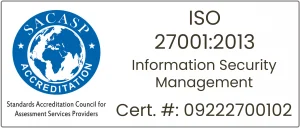In the ever-evolving landscape of enterprise computing, IBM i and AS400 have a distinct place in redefining the progress of several organisations in the digital arena. The AS400, or Application System/400, revolutionised the world of computing in the late 1980s with its integrated hardware and software model, marking a leap forward in system reliability and security. Going through several modernisation IBM I have now evolved as a platform that not only preserves the strengths of its predecessor but also embraces modernity with open standards and innovative capabilities.
This blog aims to bring the significance of both IBM i and AS400 while shedding light on their origins, development, and the unique roles they play in today’s IT infrastructures. Also invoking readers to understand how these systems have shaped, and continue to shape, the backbone of global business operations, and why they remain relevant in the digital age.
Despite their apparent similarities, these are distinct entities with unique characteristics. In this comprehensive blog post, we will delve into the nuances of IBM i and AS400, exploring their functionalities, and key differences.
Understanding the IBM I and AS400
Introducing IBM i
IBM i, short for IBM Integrated Information, is an operating system (OS) developed by IBM for their Power Systems servers. Originally introduced as the AS/400 in 1988, IBM i has undergone several transformations, evolving into a robust and integrated platform for midrange and enterprise-level businesses.
Introducing AS400
AS400, (IBM AS400, AS400 System, AS400 i Series, IBM I Series AS400), is not a distinct entity but rather a popular colloquial term used to refer to the IBM System/38 and its successor, the AS/400. The AS/400 was a groundbreaking product introduced in 1988, emphasising ease of use, integration, and reliability. Over time, the AS/400 has evolved into the modern IBM i platform.
The Hardware and Architecture Breakdown
In inspecting the hardware and architecture of AS400 alongside its contemporary evolution, IBM i, distinctive features emerge, shaping the technological narrative.
AS400
Let us focus on numerous factors that are enabling AS400 to continue to thrive and remain relevant in today’s ever-evolving technological landscape.
Decades of reliability
AS400 made its debut in 1988, highlighting proprietary hardware architecture that marked a significant stride in computing technology, which is even relevant today.
Integrated Design
Operating on a groundbreaking integrated design, AS400 seamlessly blended hardware, operating systems, databases, and applications into a unified computing solution.
Comprehensive Computing Solution
The proprietary hardware architecture of AS400 laid the groundwork for a comprehensive computing solution, catering to a broad spectrum of business needs.
IBM i
Built with robust features, IBM i stand distinctly ahead of the competition, offering diverse capabilities.
Evolutionary Transition
The evolution from AS400 to IBM i signifies a transformative shift in hardware architecture, demonstrating a commitment to staying abreast of technological advancements.
Compatibility Retention
While embracing modernisation, IBM i retains compatibility with older AS400 hardware. This strategic move ensures a seamless transition for businesses accustomed to the AS400 infrastructure.
Support for Newer Architectures
Introducing support for newer hardware architectures, IBM i brings a breath of fresh air to the technological landscape. This adaptability allows businesses to leverage the latest hardware advancements.
Modern and Adaptable Infrastructure
IBM i’s evolution paves the way for a more modern and adaptable infrastructure. This transition positions businesses to thrive in a dynamic and ever-evolving technological environment.
Balancing Legacy and Innovation
Balancing the legacy of AS400 with the demands of innovation, IBM i’s architecture ensures a harmonious coexistence of proven reliability and innovative technology.
Integration Capabilities
The integration capabilities of AS400 and its successor, IBM i, stand as cornerstones in the operational efficiency of businesses. Let us delve into how these platforms master the art of seamlessly integrating diverse components:
AS400
Let us introspect numerous factors favouring integration of AS400:
Groundbreaking Integration
AS400 revolutionised integration capabilities during its inception, providing a pioneering solution that unified hardware, operating systems, databases, and applications.
Unified Solution
The platform offered a cohesive approach, allowing businesses to operate within a unified ecosystem. This streamlined integration paved the way for enhanced efficiency and productivity.
Holistic Operational Framework
AS400’s integration prowess created a holistic operational framework, reducing complexities associated with managing disparate components. This made it a preferred choice for organisations seeking a comprehensive computing solution.
IBM i
The predecessor of AS400 has evolved and has several factors attributing the enduring legacy and technological resilience, which are listed below.
Evolutionary Excellence
Building on AS400’s legacy, IBM i continues to push the boundaries of integration capabilities. The platform’s modernised architecture ensures a seamless evolution, adapting to the requirements of contemporary technologies.
Compatibility with Contemporary Technologies
IBM i excels in maintaining compatibility with the latest technologies, enhancing its integration capabilities. This adaptability allows businesses to effortlessly integrate modern tools and applications into their existing infrastructure.
Strategic Alignment with Business Needs
IBM i goes beyond traditional integration, strategically aligning its capabilities with the evolving needs of businesses. This ensures that organisations can stay ahead in a dynamic and competitive market.
Flexibility for Business Growth
The platform’s integration capabilities offer flexibility for businesses to grow and adapt. Whether integrating modern technologies or scaling operations, IBM i provides a foundation that supports seamless expansion.
Unified Ecosystem for Efficiency
IBM i continues to champion a unified ecosystem. This not only preserves the streamlined integration approach initiated by AS400 but also introduces refinements that cater to the complexities of modern business operations.
Enhanced Collaboration and Communication
The integration capabilities of IBM i extend to fostering enhanced collaboration and communication within organisations. This interconnected environment contributes to improved decision-making processes and operational synergies.
Operating System Evolution
The evolution of operating systems from AS400 to IBM i is a testament to the dynamic nature of technology, requiring continual adaptation to meet the changing landscapes of business and computing.
Let’s delve deeper into the nuances of this evolutionary journey:
AS400
With ground-breaking technology, As400 has offered diverse solutions, and the parameters are listed below:
Original Operating System
AS400, upon its introduction, operated on its proprietary original operating system. This system laid a robust foundation, offering a comprehensive computing solution for its time.
Pioneer of Its Era
The AS400 operating system was a pioneer, providing businesses with a reliable and integrated environment. However, as technology advanced, the need for progressive changes became evident.
Adaptation Imperative
In the face of accelerating technological change, AS400 recognised the imperative to enhance its operating system. This led to a series of advancements aimed at aligning the platform with emerging business requirements.
IBM i
IBM I have evolved, and offers a plethora of benefits which are listed below:
Modernised Operating System
IBM i represents a modernised and evolved operating system, building upon the foundation laid by AS400. This evolution is a strategic response to the evolving digital landscape.
Designed for the Digital Era
Tailored to cater to the demands of the digital era, IBM i introduces features and capabilities that align with the requirements of contemporary businesses. It reflects a forward-looking approach to technology.
Commitment to Technological Advancements
The progression to IBM i signifies a steadfast commitment to staying current with technological advancements. This dedication ensures that businesses leveraging the platform can benefit from the latest innovations in computing.
Seamless Transition
IBM i’s evolution ensures a seamless transition from the traditional AS400 operating system. This transition allows businesses to retain the familiarity of their computing environment while embracing the benefits of modernised features.
Integration of Modern Technologies
With a focus on innovation, IBM i strategically integrates modern technologies into its operating system. This includes advancements in security, compatibility, and performance to meet the demands of contemporary computing.
Enhanced Business Agility
The modernised operating system enhances business agility by providing a flexible and adaptive environment. IBM i ensures that organisations can swiftly respond to evolving technological and business challenges.
Software and Application Support
Exploring the support for software and applications on AS400 and its successor, IBM i, offers a glimpse into their adaptability and versatility. AS400 laid the groundwork by supporting a broad range of applications, IBM i elevates this support to new heights.
The adaptability and robust compatibility with both modern and legacy applications position IBM i as a versatile platform, providing businesses with the flexibility to navigate the ever-changing landscape of software and applications.
AS400
Numerous factors are fuelling the continued relevance and resilience of the AS400. They are listed below as follows:
Original Architecture Support
AS400, with its pioneering architecture, initially supported a diverse array of business applications. Its all-encompassing design caters to a wide spectrum of computing needs for businesses.
Challenges with Modern Software
As technology advanced, a challenge emerged – the need for compatibility with modern software. The original architecture faced limitations in seamlessly integrating with the latest software solutions, prompting a need for evolution.
Adaptation Imperative
Recognising the evolving landscape, AS400 acknowledged the imperative to adapt its software support to align with contemporary technologies. This realisation fuelled the transition towards a more adaptable framework.
IBM i
IBM i offer diverse support, bringing continuous evolution. The features are listed below as follows.
Evolving Software Landscape
IBM i, as the evolutionary successor to AS400, strategically addresses the dynamic software landscape. Its architecture is designed to accommodate and support a vast array of contemporary applications.
Robust Support for Modern Applications
Emphasising adaptability, IBM i offers robust support for modern applications. Businesses can leverage the latest software solutions, ensuring they remain at the forefront of technological advancements.
Compatibility with Legacy Applications
IBM i places a premium on compatibility, allowing businesses to seamlessly integrate and maintain legacy applications. This ensures a smooth transition to newer software solutions without compromising existing functionalities.
Strategic Integration Initiatives
The platform strategically integrates with emerging software technologies, fostering an ecosystem where businesses can harness the benefits of both legacy and modern applications.
Future-Ready Adaptability
IBM i’s commitment to adaptability ensures that businesses are not only equipped with current software support but are also future-ready to embrace upcoming innovations.
Open-Source Integration
Recognising the significance of open-source solutions, IBM i facilitates the integration of open-source languages, allowing businesses to explore and implement a diverse range of software options.
Security and Reliability
The security and reliability of computing platforms are pivotal elements that businesses prioritise to ensure seamless and secure operations. The security and reliability of both AS400 and IBM i are deeply ingrained in their history. While AS400 laid the foundation, IBM i builds upon it, adapting to contemporary threats, introducing new access controls, and reinforcing reliability.
The ongoing commitment to security ensures that these platforms remain stalwarts in providing a secure and reliable computing environment for businesses in today’s ever-evolving digital landscape.
AS400
Let us delve deeper into the distinguishing security features in detail.
Robust Security
AS400 was renowned for its robust security features, establishing a reputation for providing a secure computing environment for businesses.
Comprehensive Reliability
The platform earned trust through its reliability, becoming a backbone for various mission-critical business operations over the years.
Continuous Adaptation
As technology progressed, AS400 adapted its security measures to address emerging threats. However, the evolving digital landscape necessitated further enhancements.
IBM i
IBM I have made a significant contribution regarding Security and Reliability, and the significant factors are:
Building upon AS400's Foundation
IBM i inherit the strong security foundation laid by AS400, leveraging its legacy while advancing security protocols to meet modern challenges.
Consistent Improvement
The commitment to security remains unwavering. IBM i consistently invests in improving security measures, staying ahead of potential threats and vulnerabilities.
Introduction of Access Controls
The modern architecture of IBM i introduces new access controls, enhancing the granularity of security measures. This ensures a more tailored and secure computing environment.
Adapting to Contemporary Threats
Recognising the dynamic nature of cyber threats, IBM i focuses on adapting security measures to counteract modern risks, safeguarding sensitive business data.
Reliability Reinforced
IBM i upholds and reinforces the reliability factor, acknowledging its crucial role in supporting mission-critical business operations without compromising performance.
Strategic Integration with Modern Technologies
The platform strategically integrates with modern technologies, ensuring not only security but also compatibility with emerging software and applications.
Ongoing Industry Compliance
IBM i maintains compliance with industry standards and regulations, providing businesses with a secure foundation that aligns with legal and regulatory requirements.
User Authentication Enhancements
Authentication mechanisms on IBM i undergo enhancements, incorporating multi-factor authentication and biometric recognition for an added layer of user verification.
Aspect | AS400 | IBM i |
|---|---|---|
Introduction Year | 1988 | – |
Hardware Architecture | Proprietary | Compatible with AS400; Support for newer architectures |
Operating System | Original AS400 OS | Modernised and evolved IBM i OS |
Terminology | AS400 (Legacy term) | IBM i (Contemporary term) |
Evolution | – | The transition from AS400 to IBM i signifies technological advancement |
Integration | Integrated hardware, OS, databases, and application | Maintains compatibility with AS400 hardware while introducing support for newer architectures |
Future Roadmap
The growth of AS400 over the years has made a significant impact on the way business operates. While focusing on the future, the trajectory of IBM i and AS400 is gaining momentum, owing to the digital revolution, and would continue to accelerate the evolution of business processes and technological landscapes.
The development has become pivotal for businesses navigating the complex landscape of long-term technology decisions. These platforms, with their rich histories, are not stagnant entities but dynamic ecosystems that evolve to meet the demands of the digital era.
IBM i, as the modernised iteration of AS400, holds a future roadmap marked by innovation and adaptability. The commitment to compatibility with emerging technologies ensures that businesses leveraging these platforms stay on the forefront. From the seamless integration of modern solutions to robust security measures, IBM i charts a course that aligns with the evolving needs of organisations.
AS400, with its enduring legacy, continues to play a significant role in this future roadmap. While newer technologies have emerged, AS400 remains relevant, offering stability and reliability. The platform’s commitment to continuous improvement signifies a trajectory aimed at sustaining its role as a dependable foundation for mission-critical operations.
Businesses invested in IBM i and AS400 can expect ongoing support, enhancements, and strategic alignments with industry trends. By staying attuned to the future roadmap, organisations can make informed decisions, ensuring their technology investments align with the evolving landscape and position them for sustained success in the digital age.
Conclusion
In conclusion, while the terms IBM i and AS400 are often used interchangeably, they represent various stages in the evolution of a powerful computing platform. IBM i has continued to adapt to modern business needs, maintaining its relevance in an ever-changing technological landscape. Understanding the distinctions between IBM i and AS400 is crucial for businesses seeking the right solution for their computing requirements. As technology advances, the legacy of AS400 lives on within the robust architecture and capabilities of the modern IBM i platform.
Do you feel overwhelmed by the complexity of managing AS400 based Core Banking and Financial Products?
Related Posts
Understanding the Role of AS400 DB2 – Basics and Beyond
In the evolving realm of database management, IBM AS400 DB2 stands as a stalwart, offering robust solutions tailored to diverse enterprise needs. Specifically, when operating on the AS/400 platform, DB2...
AS400 Migration to Cloud: Here’s What You Need to Know
Migrating legacy systems to the cloud is essential for modernising infrastructure and fostering innovation in today's digital landscape. The AS400, renowned for its reliability, plays a crucial role in...
Embracing Transformation through IBM AS400 Application Modernization
In today's fast-paced tech landscape, businesses face a crucial decision point. At the core of this lies AS400, a long-standing pillar of enterprise computing. But with technology evolving rapidly, how does...

















